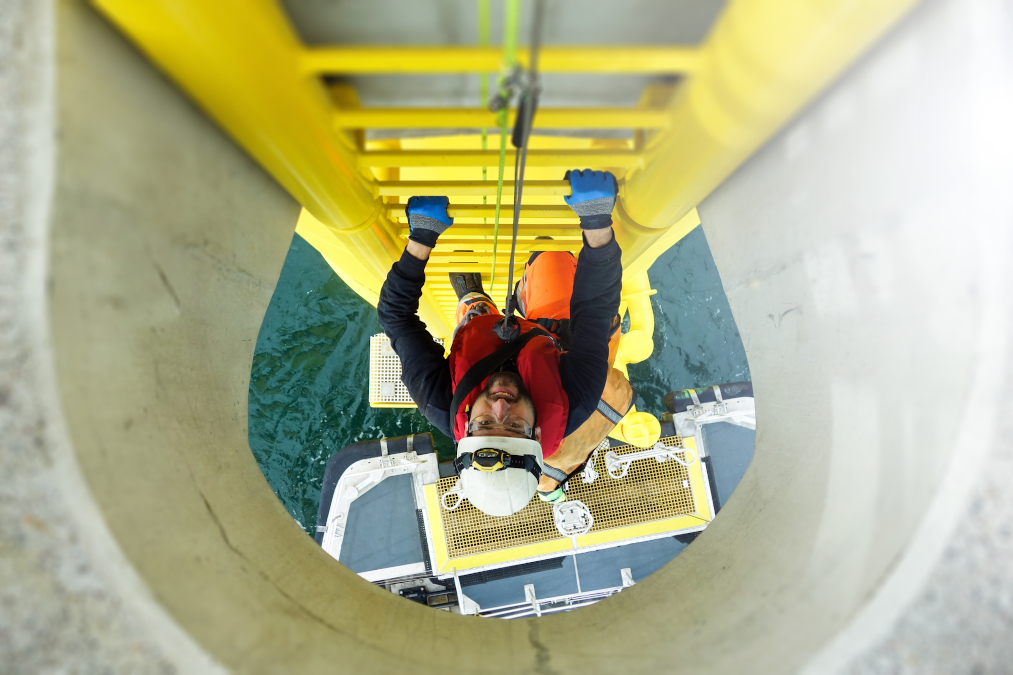What role should medics play on your offshore or onshore wind project?
It all depends on several factors, the most important being how your company defines the term “medic.â€
It’s More Than Just First Aid Training
Offshore and onshore wind companies may think that because they require every worker to complete first aid training, they have a group of “mini-medics.†The reality is that most are undertrained and not equipped to deal with significant traumas.
First aiders receive training every two years. Yet studies show that if skills don’t get used regularly, they start to fade rapidly and decrease significantly after about nine months. With a first aid course validity of two years, a patient would be considerably worse off if they were to be treated by a first aider in the second year of their run-out.
Why You Should Have Trained Medics in the Medic Role
Let’s say that a medic trained in advanced lifesaving skills is not available when a major medical issue or trauma occurs on an offshore project.
It then becomes the responsibility of the first aider to give treatment from the point of the incident, during the transfer to a vessel, and during transportation to shore, a process that could take hours.
Unfortunately, during an emergency, offshore and onshore wind companies may find that the first aiders:
- Don’t want to take on the liability
- Don’t believe it’s their “jobâ€
- Don’t know what to do because they took the course so long ago
- Haven’t received the advanced training required to deal with certain injuries
A medic with advanced lifesaving skills can be far more valuable than a first aider in many situations.
The Medic’s Role Should be Providing Proper Medical Treatment on Your Wind Project
On-site medics should provide expert medical treatment as it’s essential to the wellbeing of your employees constructing and managing the turbines on your project.
The best way to guarantee proper medical treatment is available on your project is to retain a professional workplace health and safety staffing service that provides trained medics for offshore, onshore, and remote medical support.
Organizations like these provide a complete range of medical services including medical and safety staff, topside support, case management, and evacuation services. By providing all these services under one roof, there’s continuity of care from the incident to case resolution.
Challenging Aspects of the Medic Role Offshore
If your company’s business focuses on offshore wind farms, you know several aspects of your projects make the medic role challenging. One of the biggest challenges you’ve likely encountered is a lack of space to set up a clinic.
Since the turbines on your offshore wind farm usually don’t have any space, your on-site medics must carry everything they need on them or in a backpack. This allows them to access your turbines if required.
It also means that medics must have the right experience to overcome the difficult environment and provide exceptional care to your employees. This includes:
- Advanced medical training
- Experience in offshore environments
- The ability to meet fitness requirements to ensure they are capable of scaling a turbine to reach an injured or sick individual
- The knowledge to perform quick assessments
- Knowing if the individual can be treated on-site or if they need to be evacuated
- And, in the case of COVID-19, knowing how to protect the rest of the crew with quarantine procedures, testing, and safely transferring sick employees to a hospital on-shore
Place RMI Medics in the Medic Roles on Your Offshore and Onshore Wind Projects
Our medical personnel have mastered health and safety in remote project locations like offshore and onshore wind farms.
Consider placing RMI medics in the medic roles on your offshore or onshore wind projects to keep your employees healthy and safe while they build our global renewable energy supply.


